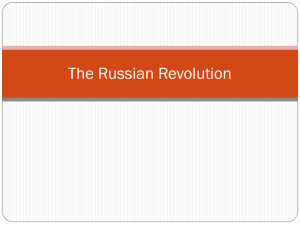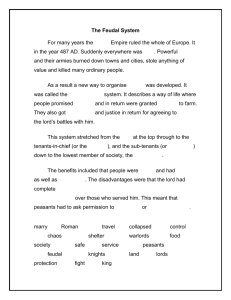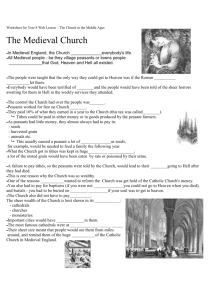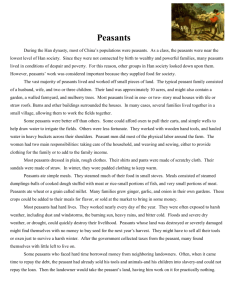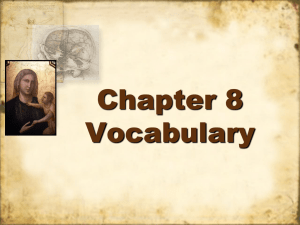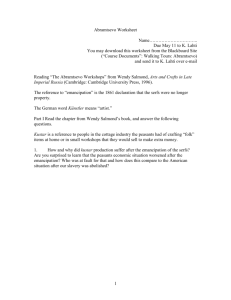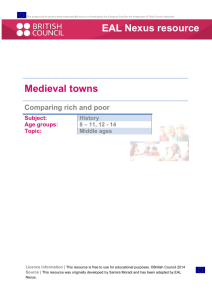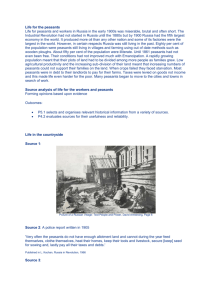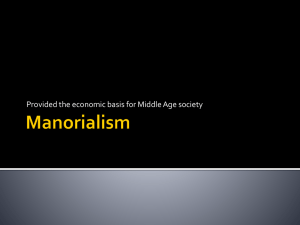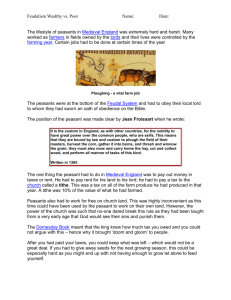medpeasant
advertisement
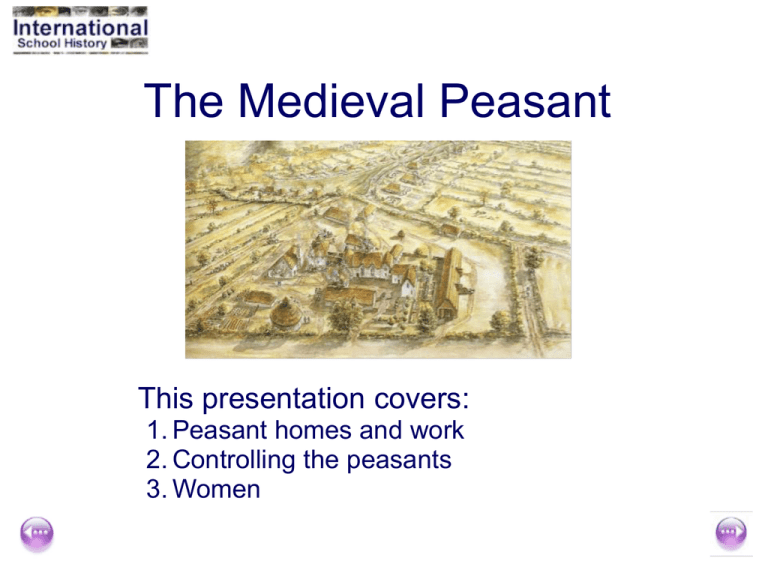
The Medieval Peasant This presentation covers: 1. Peasant homes and work 2. Controlling the peasants 3. Women 1 of 16 Peasant housing A villein's home was very poor by our standards. Many were just one-room huts, perhaps 6 metres by 4.5 metres. The walls were made of woven branches called wattle. This was covered with daub - a mixture of clay, dung and straw. Animal hair was used to bind it together. There were holes for windows and a hole for the door. The floor was just the earth on which the house was built. Often there was no chimney. These poor cottages disappeared centuries ago. Each probably only lasted for about 20 years. They had no taps. Water came from a nearby stream. A pit in the garden did for a toilet. 2 of 16 Peasant housing 3 of 16 Peasant housing 4 of 16 How the peasants farmed Few farmers could afford the four oxen needed to pull the plough, so they grouped together and ploughed everything at once. This meant that peasants needed to be very good at working collectively (together) 5 of 16 All the sowing and harvesting had to be done at the same time. The corn was cut with sickles and threshed with flails. It was then taken to the lord’s mill to be ground. The hay was cut with scythes. sickle scythe threshing 6 of 16 The peasant’s life As well as the specific chores, peasants also had to dig and maintain drainage ditches, look after their animals, make repairs to their house, tend their gardens and collect firewood all year round. On top of all this, peasants had to do their services to the lord – usually three days a week ploughing and other jobs. 8 of 16 Life was certainly hard for peasants, but the problems did not end there. The lord of the manor had a great deal of control over his peasants. A villein could not marry without his permission, nor could a villein travel beyond the village without permission. (Freemen could!) Peasants also had to make payments for certain things. To stop fires, ovens for baking bread were controlled by the lord and had to be paid for. All the peasants had to use the lord’s mills, using your own hand mill would mean you would be punished! Even brewing your ale had a price. Ale tasters had to check it before it could be sold. 9 of 16 The woman’s life Medieval manuscripts were mostly written by men. They tell us little about women's lives. Yet women played an important role in village life. Married women led lives which were probably harder than the men's. They were expected to help their husbands in the farming work. On top of that, they cleaned the house, cooked and made clothes and brought up the children 10 of 16

